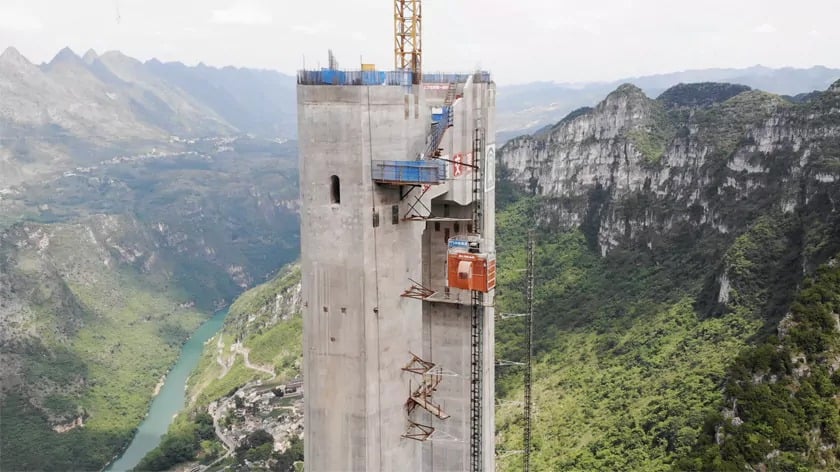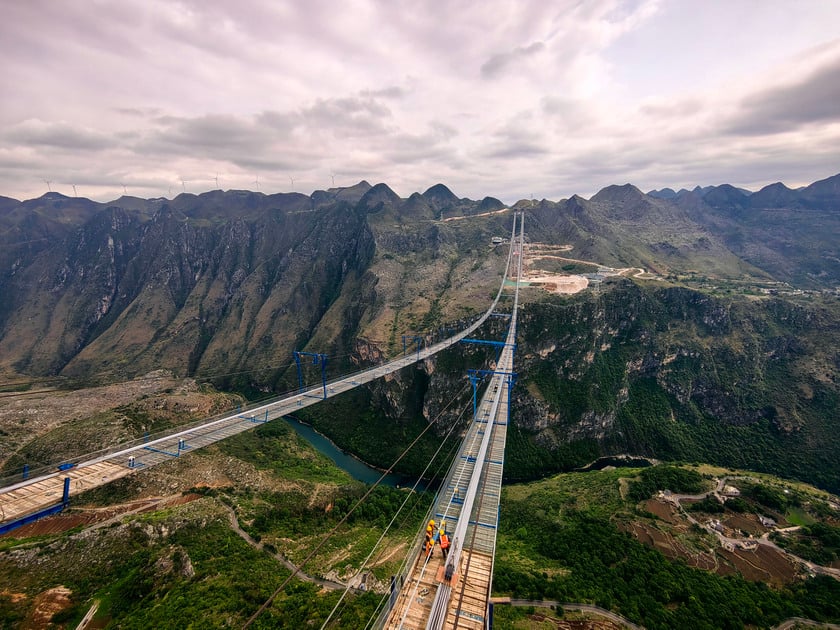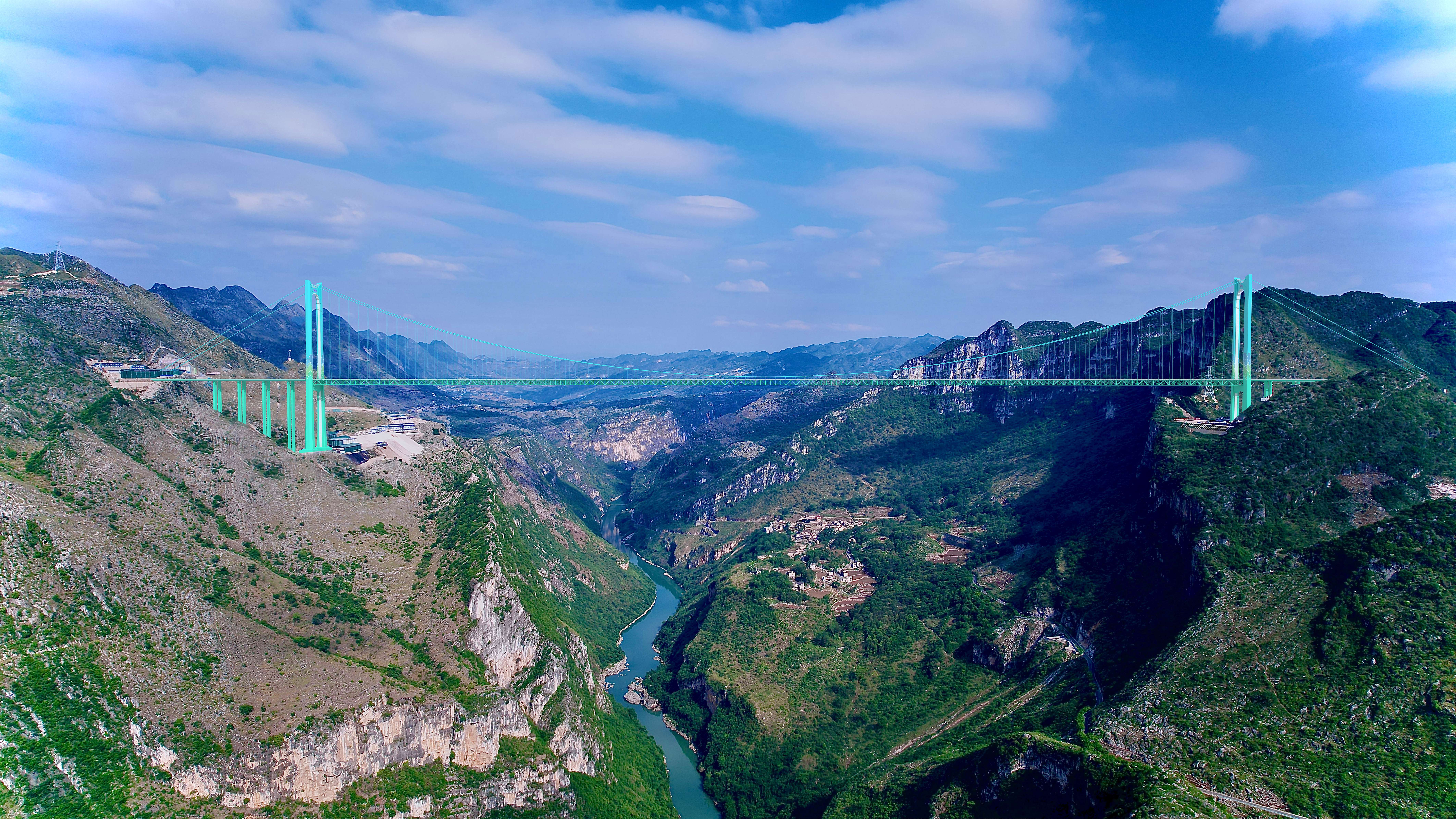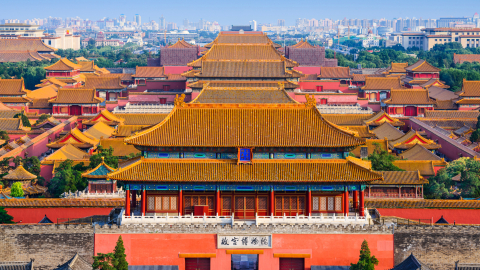An engineering feat in challenging terrain
Covering over 176,000 square kilometers, Guizhou Province in southwest China is one of the most mountainous regions in the country. Known for its deep gorges and difficult-to-access lands, Guizhou has long faced challenges in developing its transportation infrastructure. To address this, China has decided to build an ambitious infrastructure project – the Huajiang Grand Canyon Bridge, the world’s highest bridge, which is scheduled to open in June 2025.

Huajiang Grand Canyon Bridge
Impressive specifications
The Huajiang Deep Gorge Bridge has a total length of 2,890 meters, with a main span of 1,420 meters, helping the bridge cross the deep gorge of the Beipan River. Notably, the height of the bridge reaches 625 meters, equivalent to the height of a 200-story building. This helps the bridge cross the deep gorge and creates a unique and impressive "viewpoint" for both tourists and those who want to witness this miracle.
As a suspension bridge, the main pillars of the bridge are 262 meters high and are made of steel, with a total steel structure weight of up to 22,000 tons - equivalent to the weight of three Eiffel Towers. Huajiang Deep Abyss Bridge is designed to withstand harsh natural elements, from strong winds to earthquakes, and will be the most reliable bridge in the mountainous region of Guizhou.

The world's tallest bridge is expected to open in June 2025
Challenges in the construction process
The construction of Huajiang Deep Abyss Bridge was not an easy task. Engineers and workers faced many challenges during the construction process. The rugged terrain and harsh climatic factors created many difficulties. To complete this bridge, thousands of tons of materials and heavy equipment had to be transported to the construction site through bumpy, mountainous roads.
In addition, modern technologies were applied during the construction process, including the use of high-strength steel structures, durable cable systems and methods of testing material durability through simulation tests. As a result, the bridge not only meets the requirements for height and length, but can also withstand the harshest natural conditions of the area.

Photo taken on January 17, 2025, at the ceremony marking the completion of the main structure of the Huajiang Deep Abyss Bridge.
Economic and social impact on the region
One of the important reasons why China is determined to build the Huajiang Deep Gorge Bridge is its ability to boost the economy and improve the quality of life of local people. Before the bridge was built, traveling between Liuzhi and Anlong was a huge challenge for people and vehicles. Travel time through the gorge was up to two hours, making it difficult to transport goods and travel.
When the Huajiang Deep Abyss Bridge is completed, travel time will be shortened to about one minute. This will not only enhance connectivity between regions but also create opportunities for tourism, trade and investment. Tourists will have easy access to Guizhou's exciting destinations, while businesses will also benefit from reduced transportation costs and increased trade.
Furthermore, the bridge will also help promote the development of other industries, including ecotourism. Guizhou is known for its majestic natural landscapes such as canyons, waterfalls and nature reserves. The Huajiang Deep Abyss Bridge will open up new opportunities for tourists to explore the area.

Known for its majestic natural landscapes such as canyons, waterfalls and nature reserves, the Huajiang Deep Abyss Bridge will open up new opportunities for visitors to explore the region.
The Huajiang Deep Abyss Bridge is not only a major transportation project, but also a symbol of China's infrastructure and engineering prowess. With a series of large-scale infrastructure projects underway across the country, from sea-crossing bridges to high-speed railways, China has established itself as one of the pioneering countries in the construction industry. When the bridge is completed and put into use, it will be an important part of China's infrastructure development strategy, as well as a destination for tourists and engineering experts from all over the world.




































